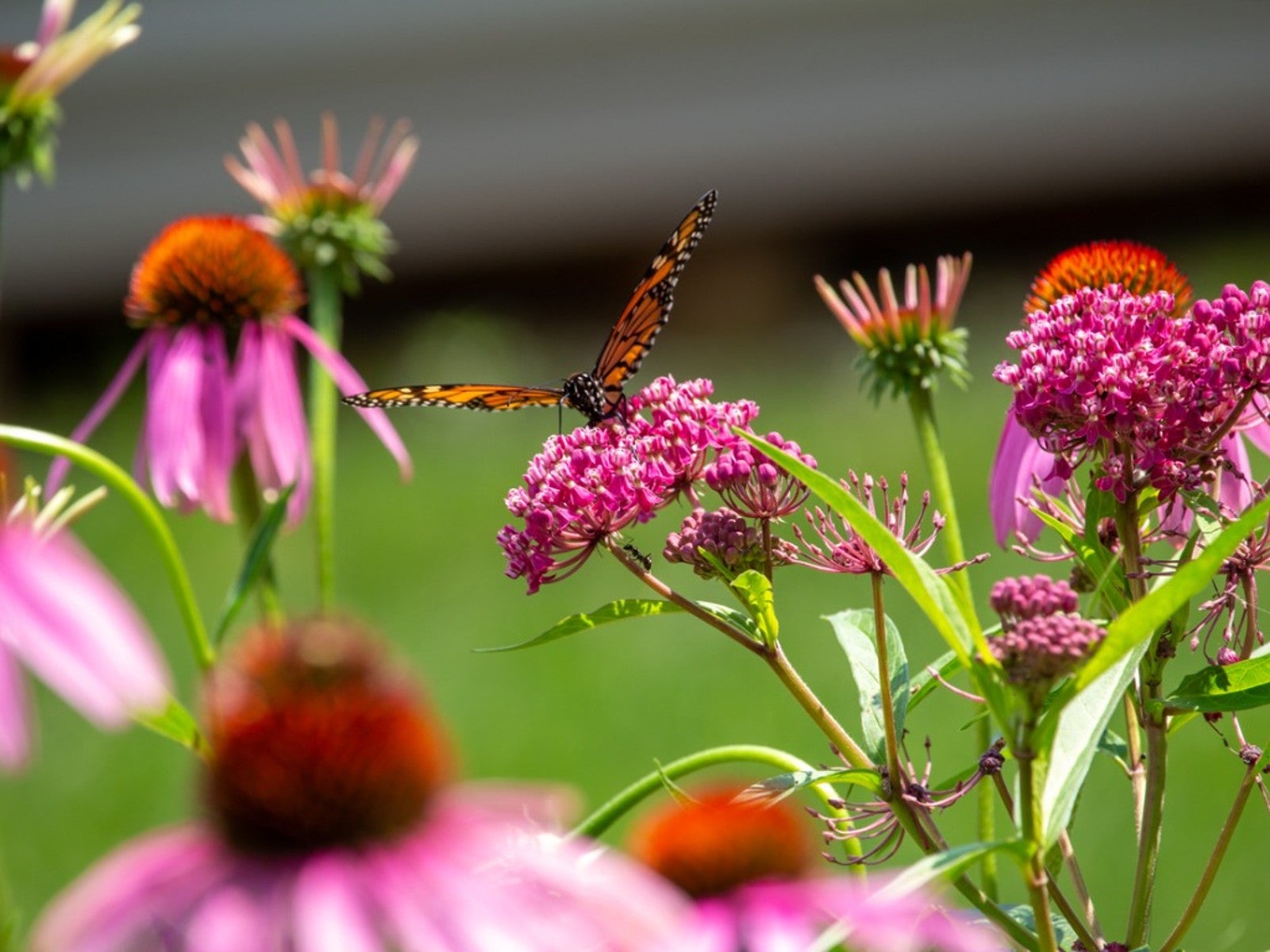Midwest Native Plants For The Ohio Valley Region


If you live in the Ohio Valley region, it makes sense to plant Midwest Ohio native plants. Native plant species are well-adapted to their place of origin. These plants require less maintenance, fewer chemicals, and many are perennials which return year after year. Additionally, many of these plants provide food and shelter for native animals, insects, and bird species.
Midwest and Ohio Valley Native Flowers
From Ohio to Missouri, native plants in the Midwest include many flower garden beauties. These plants often have long bloom times, and many can be used in fresh and dried arrangements:
- Black-Eyed Susan (Rudbeckia hirta) – The yellow daisy-shaped flowers of black-eyed Susan bloom on multi-branching stems in summer and early fall.
- Cardinal flower – (Lobelia cardinalis) – Add color to the garden with spiky flower stalks of cardinal flower, bearing five-lobed, bright red flowers.
- Goldenrod (Solidago Canadensis) – Give the garden an autumn feel with these fall-blooming yellowish gold, feathery flowers of goldenrod.
- Purple Coneflower (Echinacea purpurea) – Say “I love you” all summer long with bouquets of coneflower’s daisy-like flowers with pinkish purple petals.
- Tall Ironweed (Vernonia gigantea) – Look for the brilliant purple flowers of tall ironweed on 4 to 6 feet (1-2 m.) plants in late summer.
- Virginia Bluebell (Mertensia virginica) – Enjoy the blue, trumpet-shaped blossoms of Virginia bluebell in early spring.
Harvesting Food from Native Plants
For centuries, indigenous people of the Americas survived by foraging Midwest and Kentucky native plants. Here are a few native species you can add to your edible landscaping:
- American black elderberry (Sambucus canadensis) – Pick clusters of dark purple berries from the American black elderberry for pies, jellies, and wine in midsummer.
- Anise Hyssop (Agastache foeniculum) – Use the licorice-scented leaves of anise hyssop for tea, to flavor jellies or add it to salads.
- Hazelnut (Corylus americana) – You'll have to fend off the squirrels to harvest these small edible hazelnuts in late summer.
- Pawpaw (Asimina triloba) – There are endless ways to use the tropical-flavored flesh from the yellowish, green fruit of pawpaw.
- Red Mulberry (Morus rubra) – It's definitely pie season when red mulberry produces multitudes of 1 inch long (2.5 cm.), blackberry-shaped fruit.
- Wild Black Cherry (Prunus serotina) – These tiny, tart cherries of wild black cherry can be eaten raw or used for jams, sauces, and juice.
Creating Specialized Gardens with Natives
Whether you want to create a bird garden, attract more bees to your veggie plants, or simply want an attractive garden design, Ohio Valley and Illinois native plants can do the job:
- Bee balm (Monarda didyma) – The beautiful red flowers of bee balm attract pollinators, including bees to the garden.
- Common Milkweed (Asclepias syriaca) – Support local butterfly populations by planting milkweed, a host plant for Monarch caterpillars.
- Garden Phlox (Phlox paniculata) – Pick the purple, pink, or white blossoms of garden phlox for cut flowers or leave these blooms in the garden to attract butterflies and hummingbirds.
- Northern Spicebush (Lindera benzoin) – Add color to the early spring garden with this shrub's attractive yellow foliage. Then enjoy watching northern spicebush host Eastern Tiger Swallowtail caterpillars.
- Trumpet Honeysuckle (Lonicera sempervirens) – Train this vining plant to a trellis and enjoy the view as local hummingbirds visit each flower of trumpet honeysuckle for its sweet nectar.
- Winterberry Holly (Ilex verticillata) – Add winter interest to the garden with winterberry holly as this deciduous shrub overwinters bird-friendly red berries.
Obtaining Native Plant Species
Suppose you're hiking the trails at Oaubache State Park, and you see a beautiful array of Indiana native plants that you'd love to add to your home garden. Is it okay to collect seeds or remove a few plants to take home?
The answer to both questions is no. In most states, removing native plants, collecting seeds, or picking flowers from State Parks and Public Lands is illegal. If caught, you could face heavy fines or restitution for damages. Even with a private property owner's permission, removing endangered plants or picking rare flowers can threaten the plant's existence in the wild.
Instead, consider purchasing native species from a reputable dealer, your state's agriculture extension program, or a native plant society. These plants have been cloned or grown from seeds produced by non-wild specimens. In some instances, these purchases support the protection of wild strands of native plants for future generations to enjoy.
Gardening tips, videos, info and more delivered right to your inbox!
Sign up for the Gardening Know How newsletter today and receive a free copy of our e-book "How to Grow Delicious Tomatoes".

Laura Miller has been gardening all her life. Holding a degree in Biology, Nutrition, and Agriculture, Laura's area of expertise is vegetables, herbs, and all things edible. She lives in Ohio.